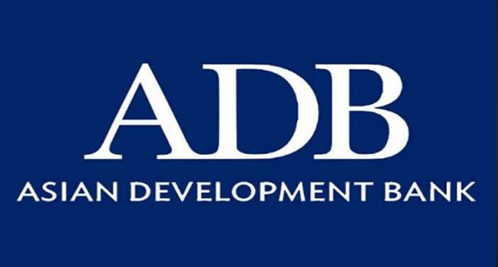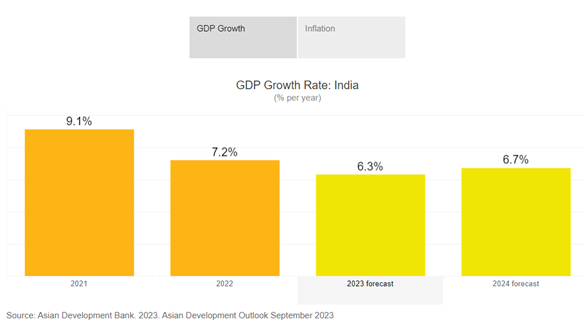Multilateral Banks: Swift Action Needed
Relevance
- GS Paper 2 Important International Institutions, agencies and fora – their Structure, Mandate.
- Tags: #Asian Development Bank #ClimateFinance #MintEditorial #UPSCMains2024.
Why in the News?
Multilateral development banks (MDBs) like the Asian Development Bank (ADB) need bold reforms to raise financing capacity and combat global crises like poverty, climate change, and the cost of living. Business as usual is not an option.
Global Crisis: Pandemic, Inequality, Climate Change
- The world is facing critical challenges after the pandemic, such as increasing poverty, financial burdens, and inequality.
- Climate change is another pressing issue, causing disasters and economic losses.
- To secure our future, we must act promptly to tackle these complex issues, known as Polycrises, before they become our reality.
Urgent Call for Multilateral Development Banks
- Multilateral development banks, such as the Asian Development Bank, need to step up and act quickly to address ongoing crises and assist people in need.
- The usual way of doing things won’t work, especially in Asia and the Pacific, where 70 millions have fallen into extreme poverty since the pandemic.
- We require bold action to secure $3 trillion annually by 2030, as suggested by the G20, to address global challenges and get back on track to achieve sustainable development goals.
- The G20 believes MDBs can help deliver this finance by pulling every last dollar from their balance sheets. I agree, and at ADB that process is well underway
ADB Expands Commitments and Investments Capacity
Capital Management Reforms
- In September, the Asian Development Bank (ADB) introduced capital management reforms to optimize its capitalization, ensuring it has enough funds for its operations.
- These reforms allow ADB to free up $100 billion in commitments capacity over the next decade.
- This means ADB can commit to financing projects worth $36 billion annually, which is $10 billion more than before, a 40% increase.
- The additional funds will primarily be used for climate investments, helping combat climate change and achieve sustainable development goals (SDGs).
Supporting Economies Hit by Pandemic
- ADB aims to increase its support for economies still recovering from the pandemic’s impact.
- This financial boost can make up to $360 billion available in the next ten years.
- ADB’s reforms are designed to ensure it maintains its AAA credit rating, which is essential for its financial credibility.
Innovations and Collaboration
- ADB has introduced various innovations to increase its lending capacity, including the Innovative Finance Facility for Climate in Asia and the Pacific, which attracts more funding for climate-related projects.
- ADB also collaborates with other multilateral development banks to reduce risks in its loan portfolio.
Continuous Reforms
- These changes are part of an ongoing effort by ADB and other multilateral development banks to adapt to evolving challenges, especially those related to global warming and sustainable development.
Urgent Actions by MDBs across 3 Key Fronts
First – Mobilizing Private Investment
- Multilateral Development Banks (MDBs) must enhance their ability to attract private investments for climate and sustainable development programs.
- MDBs play a unique role in moving from billions to trillions in financing by leveraging their resources.
- This includes creating a conducive policy environment to attract private investments, developing bankable projects, and providing financial support to draw in private capital.
Second – Domestic Revenue Mobilization
- Many countries, burdened by debt from pandemic responses, need to raise funds domestically.
- Approximately two-thirds of the required $3 trillion for global challenges can come from domestic revenue mobilization and local finance.
- To achieve this, countries must increase tax revenue, modernize tax authorities using digitalization, and collaborate for a fair international tax system.
- Environmental taxes can boost revenue and support low-carbon development.
- Efficient value-added tax (VAT) systems, including VAT on the digital economy, can be a significant income source.
- Revisiting fossil fuel subsidy policies is also crucial.
Third – Financial Innovation
- To address these challenges, financial innovation is essential.
- MDBs like the Asian Development Bank (ADB) are working to strengthen domestic capital markets.
- Utilizing blended finance methods can encourage private investments.
- De-risking tools, like credit enhancements and insurance schemes, can unlock capital for climate initiatives.
- Instruments such as thematic and sustainable bonds also play a role in mobilizing resources for critical climate actions.
To boost climate action, we can engage with emerging carbon markets. ADB’s Climate Action Catalyst Fund supports projects that reduce carbon emissions by providing upfront carbon finance through the purchase of carbon credits under the Paris Agreement. This aligns with our efforts to assist member countries in building the capacity and policies required for active participation in carbon trading. Crises can escalate rapidly. It’s essential to act swiftly to minimize their impact and work towards a prosperous future for our region and the world.
|
Asian Development Bank (ADB) Founding Vision
Inception
ADB’s Role
|
Source: Livemint
Mains Question
What are the key challenges faced by multilateral development banks (MDBs) like the Asian Development Bank (ADB) in addressing global crises such as climate change, poverty, and debt distress? Discuss the reforms and initiatives undertaken by ADB to increase its financing capacity and support for sustainable development goals (SDGs).





